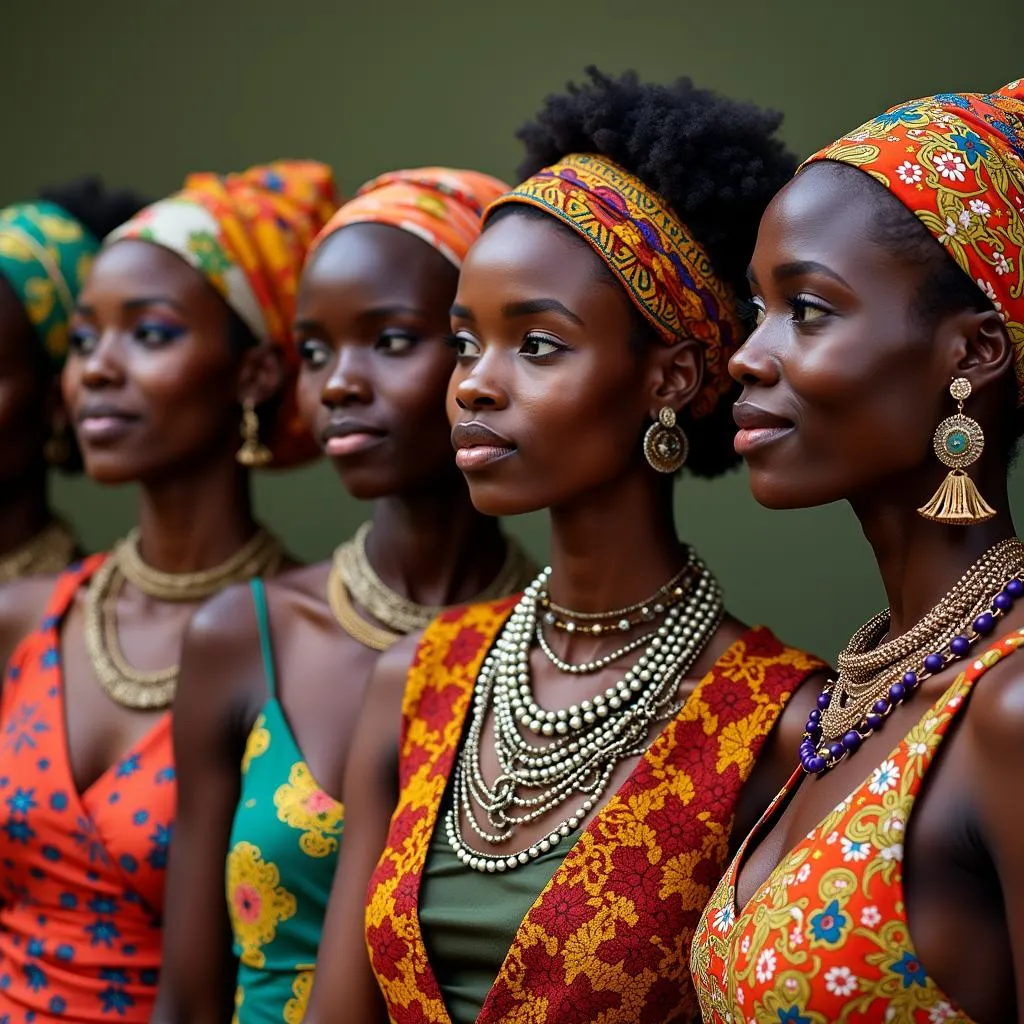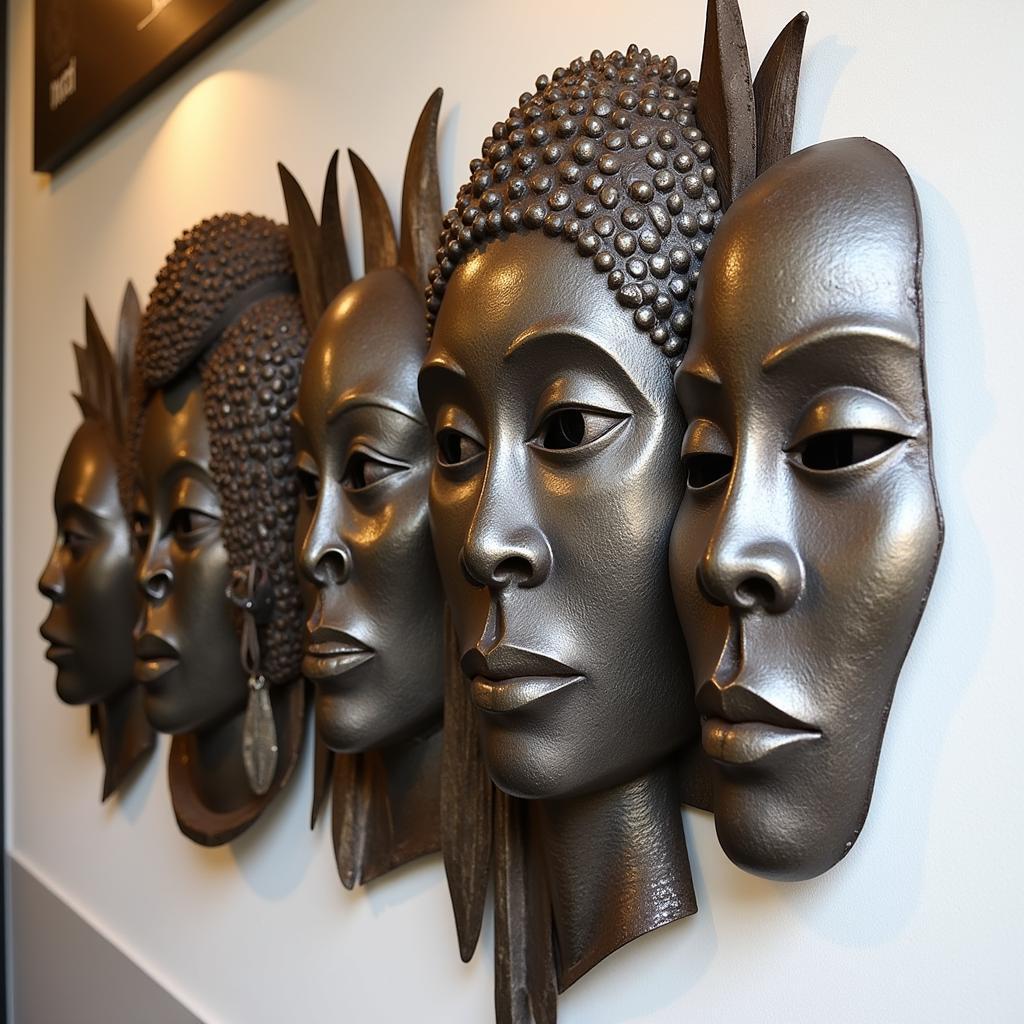A Vibrant Tapestry: Exploring African Clothing Traditional
African clothing traditional represents more than just garments; it’s a vibrant expression of culture, history, and identity woven into the very fabric of diverse communities across the continent. From the intricate beadwork of the Maasai to the flowing robes of the Tuareg, each piece tells a story, reflecting the wearer’s heritage, social status, and even spiritual beliefs. This journey into the world of traditional African attire will unravel the rich symbolism and artistry behind these unique garments.
The Significance of African Clothing Traditional
Traditional African clothing plays a vital role in various social and cultural contexts. These garments are often worn during ceremonies, festivals, weddings, and funerals, signifying the importance of these events. The colours, patterns, and materials used often hold deep meaning, reflecting the wearer’s clan, tribe, or social standing. For instance, certain colours might represent royalty or spiritual power, while specific patterns might symbolize fertility or protection. Understanding the significance of African clothing traditional allows us to appreciate the depth and complexity of African cultures.
A Kaleidoscope of Colors and Patterns
The vibrant colours and intricate patterns of African clothing are a feast for the eyes. From the bold geometric designs of Kente cloth to the intricate embroidery of the Berber people, each region boasts its own unique style. Natural dyes derived from plants, minerals, and even insects create a rich palette of colours, each with its own symbolic meaning. For example, indigo blue often represents spirituality, while red can symbolize power or celebration. The patterns themselves can tell stories, depicting historical events, myths, or proverbs.
Materials and Techniques: A Legacy of Craftsmanship
Traditional African clothing is often made from locally sourced materials, reflecting the close connection between people and their environment. Handwoven cotton, raffia, and barkcloth are common materials, each requiring skilled craftsmanship. Techniques like tie-dye, batik, and embroidery add further layers of artistry, creating unique and beautiful garments. The process of creating these garments is often passed down through generations, preserving cultural heritage and artistic skills.
Regional Variations in African Clothing Traditional
The vastness of the African continent results in a stunning diversity of traditional clothing styles. From North to South, East to West, each region has developed its own distinct aesthetic, influenced by climate, resources, and cultural traditions.
North Africa: Elegance and Functionality
North African clothing often features flowing robes and head coverings, adapted to the desert climate. The Tuareg people, for example, are known for their indigo-dyed tagelmust, a veil worn by men that protects them from the harsh sun and sand. The intricate embroidery and vibrant colours of Moroccan kaftans reflect the rich artistic heritage of the region.
West Africa: Bold Prints and Symbolic Designs
West Africa is renowned for its vibrant textiles, such as Kente cloth and Aso Oke. These handwoven fabrics are characterized by bold geometric patterns and vibrant colours, each holding symbolic meaning. The Yoruba people of Nigeria, for example, are known for their elaborate Aso Oke ensembles, worn during important ceremonies and festivals.
East Africa: Beadwork and Animal Hides
East African traditional clothing often incorporates intricate beadwork and animal hides. The Maasai people are famous for their colourful beaded jewellery and shukas, brightly coloured cloths draped around the body. The use of animal hides, such as cowhide, reflects the importance of livestock in Maasai culture.
Southern Africa: Animal Skins and Natural Fibres
Southern African traditional clothing often utilizes animal skins and natural fibres. The Himba people of Namibia, for example, are known for their ochre-covered skin and garments made from animal hides. The use of natural fibres like barkcloth and raffia reflects the resourcefulness and adaptability of Southern African cultures.
The Future of African Clothing Traditional
In a rapidly globalizing world, African clothing traditional faces both challenges and opportunities. While some worry about the loss of traditional craftsmanship and cultural heritage, others see the potential for innovation and adaptation. Contemporary designers are increasingly incorporating elements of traditional African clothing into their designs, creating modern interpretations that celebrate African heritage.
In conclusion, African clothing traditional is a vibrant tapestry of culture, history, and artistry. From the intricate beadwork of the Maasai to the flowing robes of the Tuareg, each garment tells a story, connecting the wearer to their heritage and identity. Exploring the diverse traditions and symbolism of African clothing allows us to appreciate the rich cultural landscape of this remarkable continent.
Frequently Asked Questions about African Clothing Traditional
-
What is the significance of Kente cloth? Kente cloth is a handwoven textile from Ghana, often worn during important ceremonies and festivals. Its intricate patterns and vibrant colours hold symbolic meaning, reflecting the wearer’s social status and cultural heritage.
-
What is a tagelmust? A tagelmust is an indigo-dyed veil worn by Tuareg men in North Africa. It protects them from the harsh desert environment and also serves as a symbol of identity and status.
-
What materials are commonly used in traditional African clothing? Traditional African clothing often utilizes locally sourced materials like handwoven cotton, raffia, barkcloth, and animal hides.
-
How is traditional African clothing evolving in the modern world? Contemporary designers are increasingly incorporating elements of traditional African clothing into their designs, creating modern interpretations that celebrate African heritage while adapting to contemporary styles.
-
Where can I learn more about specific regional styles of African clothing? Numerous resources are available online and in libraries, including books, articles, and documentaries, that explore the diverse regional variations in African clothing traditional.
-
How can I support the preservation of traditional African craftsmanship? Purchasing authentic handcrafted garments directly from artisans helps support their livelihoods and contributes to the preservation of cultural heritage.
-
Are there any ethical considerations to keep in mind when buying traditional African clothing? It’s important to ensure that the garments are ethically sourced and that the artisans are receiving fair compensation for their work.
Related Questions You Might Be Interested In:
- The History of African Textiles
- The Impact of Colonization on African Fashion
- Contemporary African Fashion Designers
Call us at +255768904061, email [email protected], or visit us in Mbarali DC Mawindi, Kangaga, Tanzania. We have a 24/7 customer service team.



